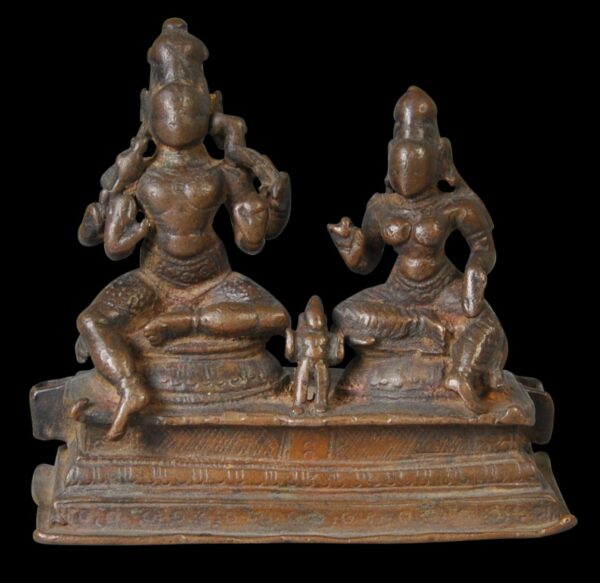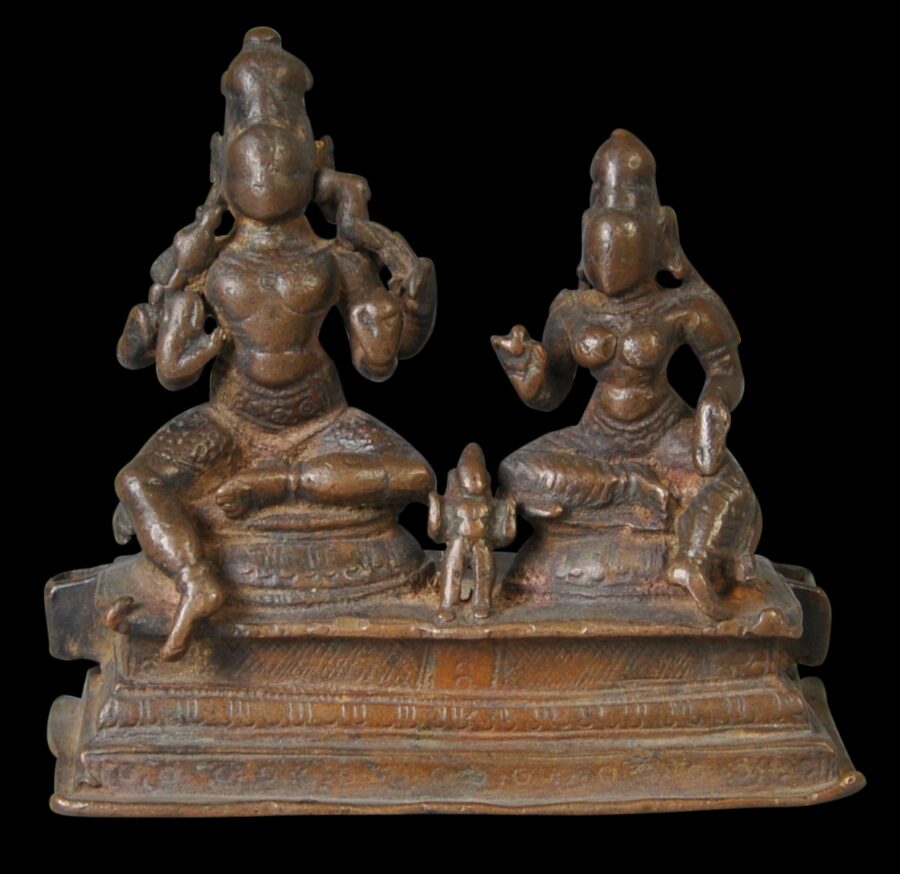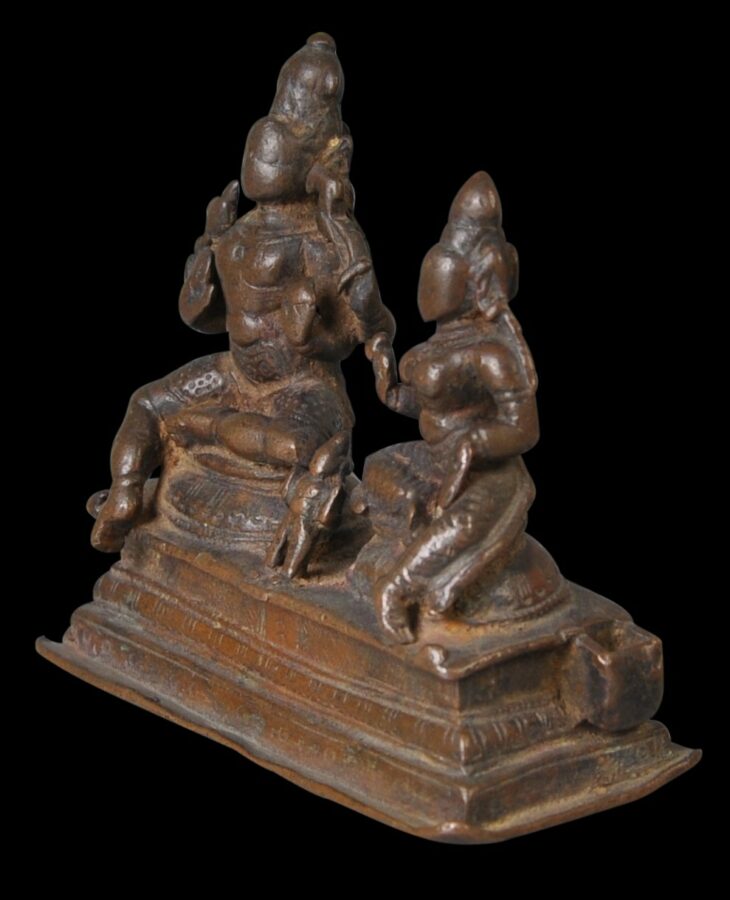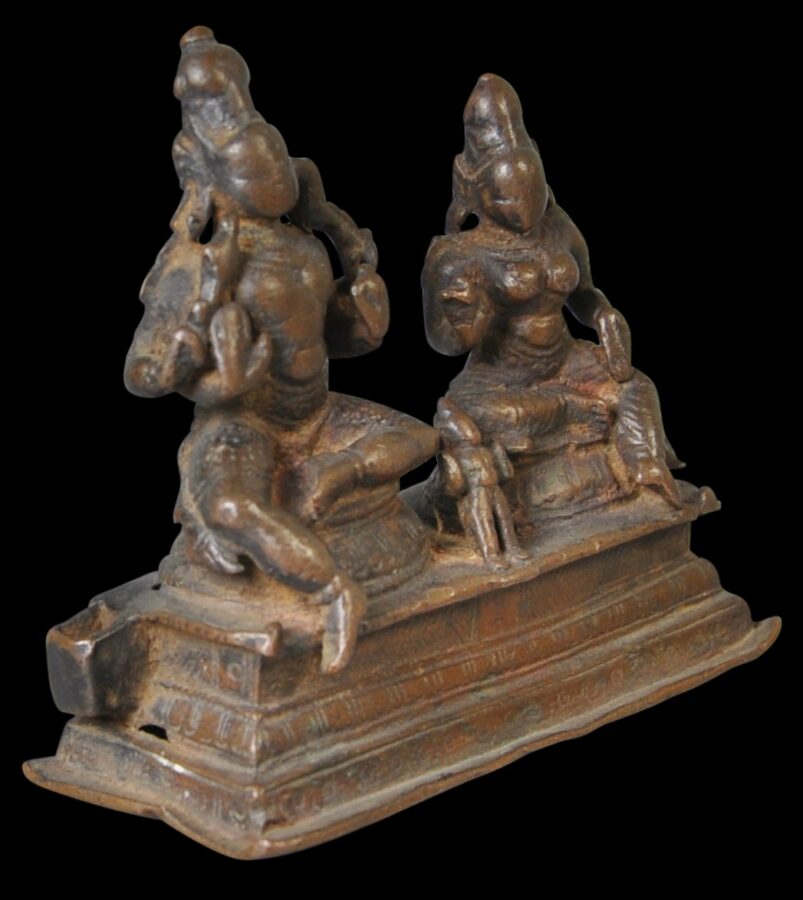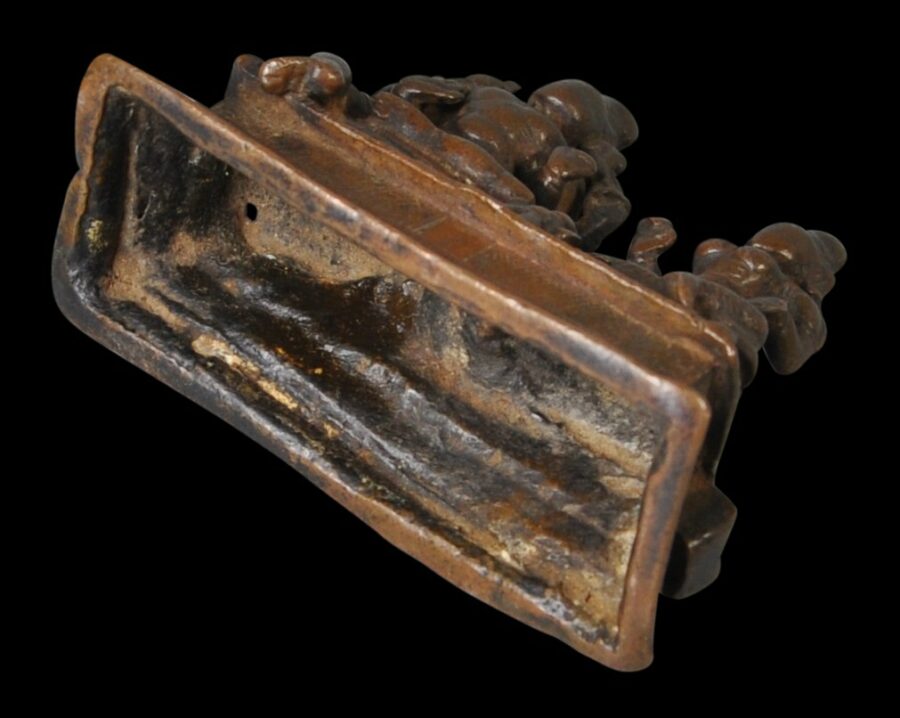This small, early bronze shows the divine family of Shiva, his consort Parvati (also known as Uma), and their son Skanda, who stands between his parents.
Small representations of the family group in this form are comparatively rare and typically are reserved for much larger bronzes that were held in temples. This example however was for private devotion.
Shiva and Parvati are seated on oval lotus pedestals, and all are arranged on a rectangular dais engraved with cross-hatching and other motifs.
Shiva, seated in lalitasana, has four arms, and holds in his upper hands, an axe and an antelope. He is represented as ‘Pashupati’ or ‘Lord of the Beasts’. His matted hair is piled atop his head in a high jata-makuta arrangement, as is Parvati’s, who is depicted with two arms, the left of which is in the boon-bestowing gesture suggesting maternal love.
Originally, a small aureole would have been attached to the rear. The two lugs on either side would have held it in place.
The bronze has much prayer-related puja wear, and a chocolatey patina. Its age is obvious.
References
Khandalavala, K., et al, The Great Tradition: Indian Bronze Masterpieces, Festival of India, 1988.
Nagaswamy, R., Timeless Delight: South Indian Bronzes in the Collection of the Sarabhai Foundation, Sarabhai Foundation, 2006.
Srinivasan, P.R., Bronzes of South India, Government Museums Madras, 1994.
Weber, J., et al, Sur la Routes des Indes: Un Ingenieur Francais dans le Tamil Nadu, Somogy Editions d’Art, 2013.


